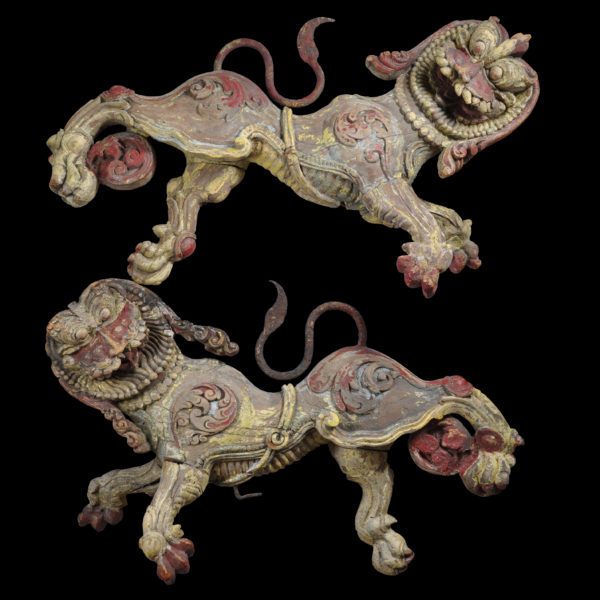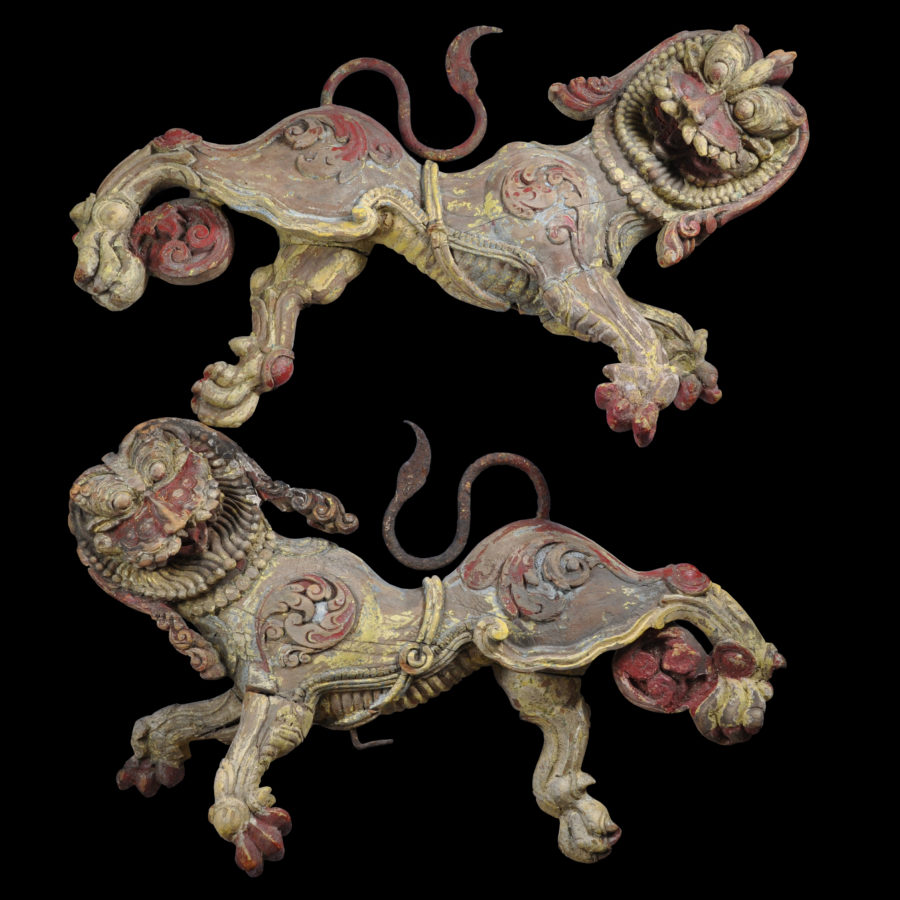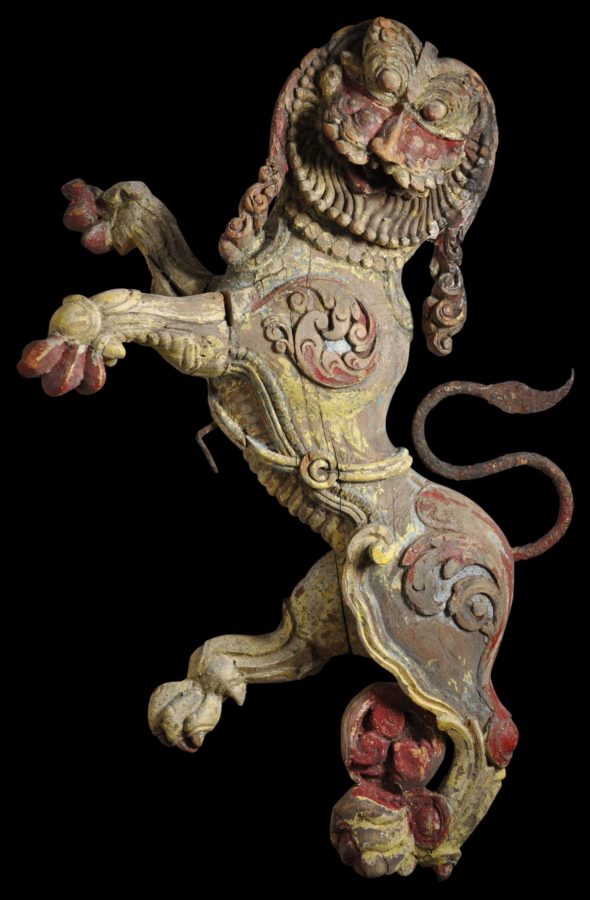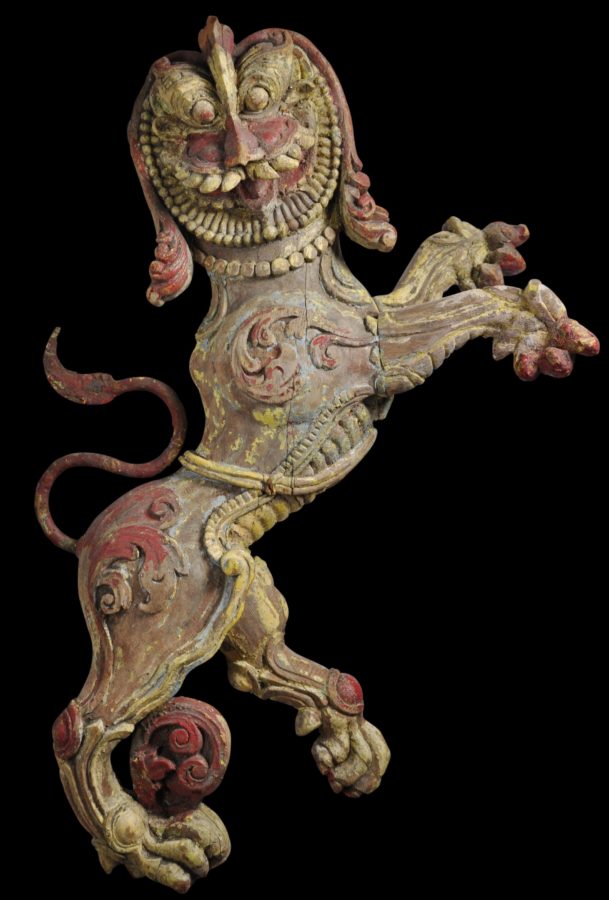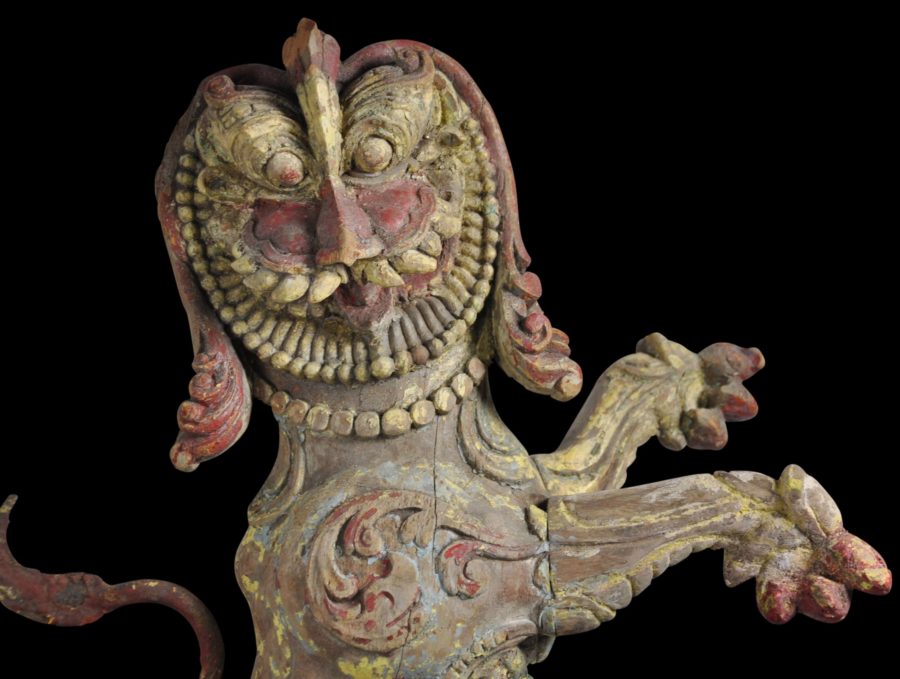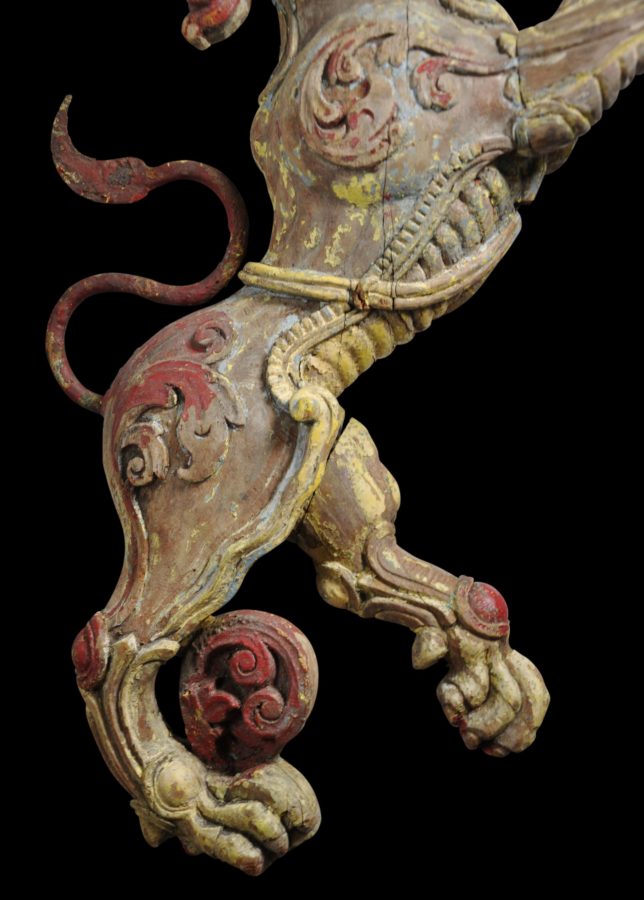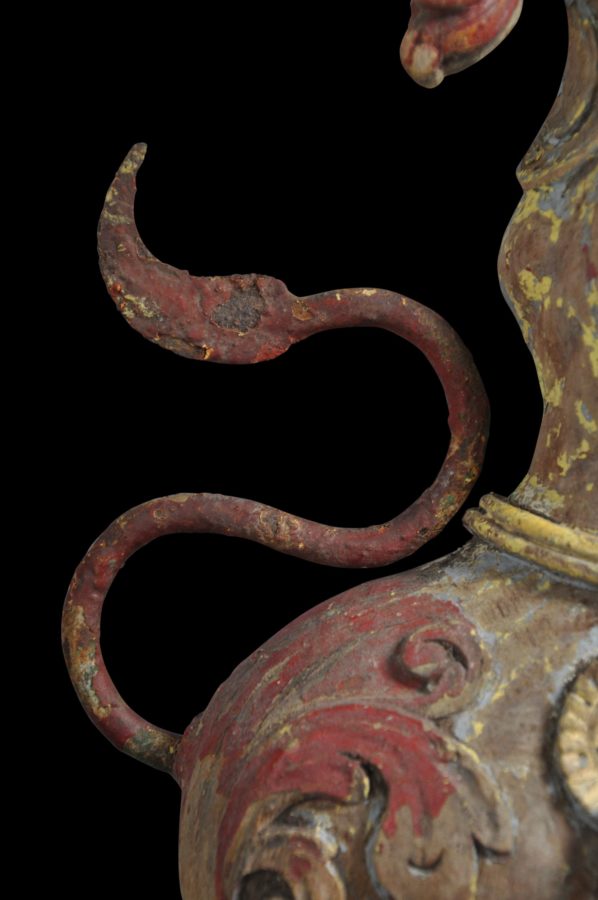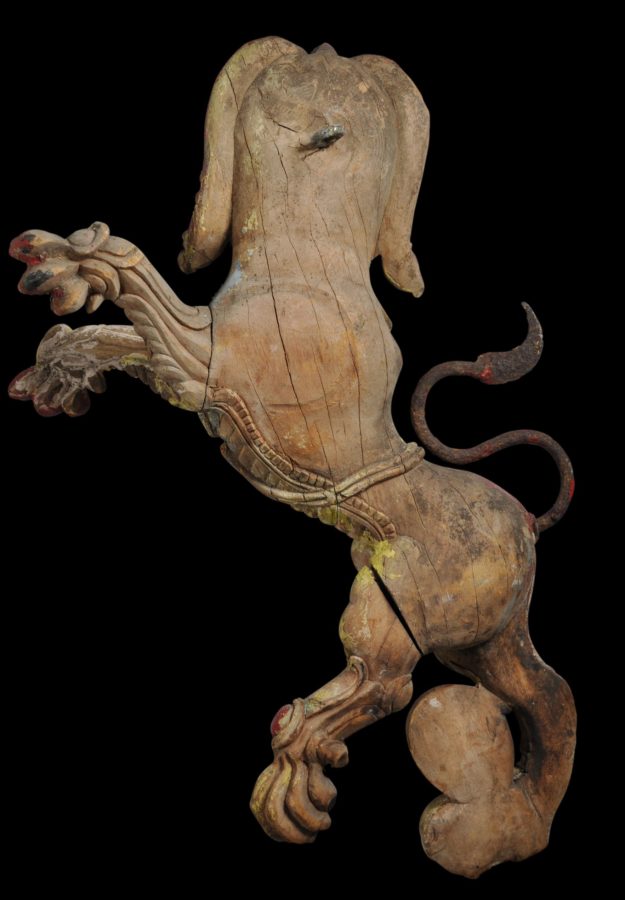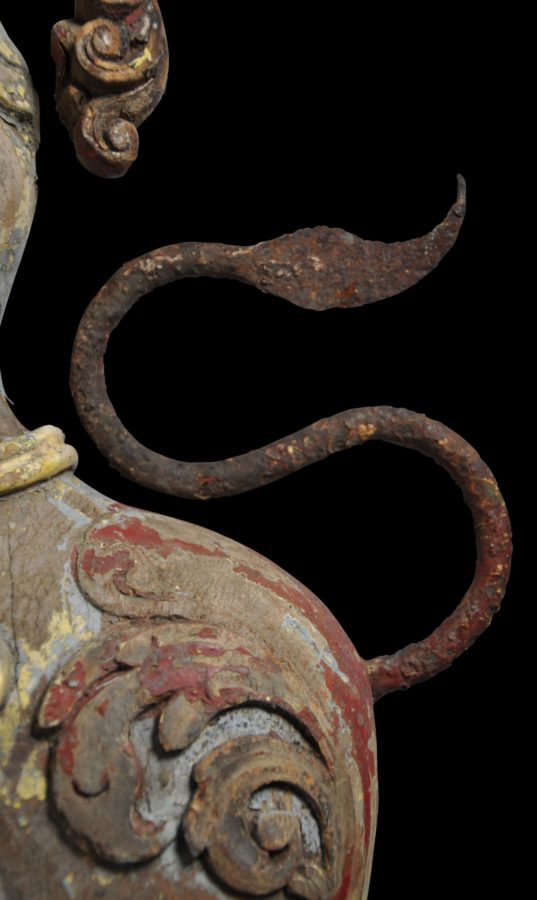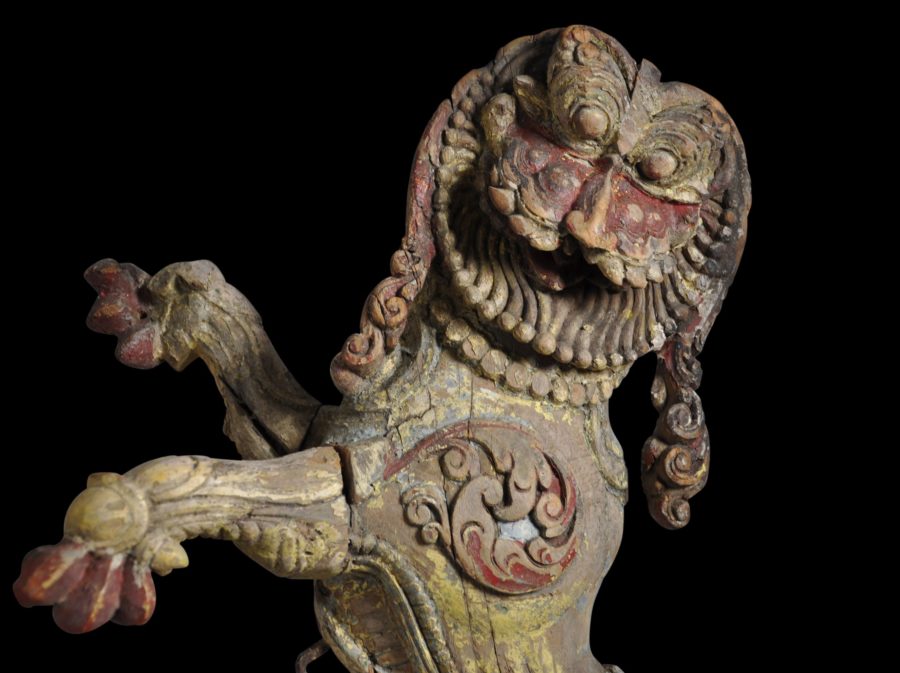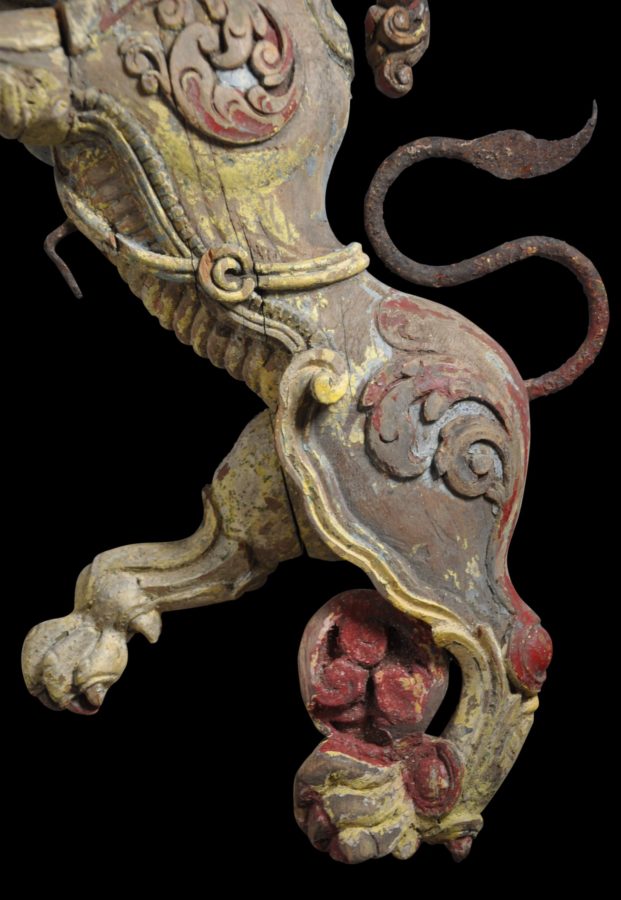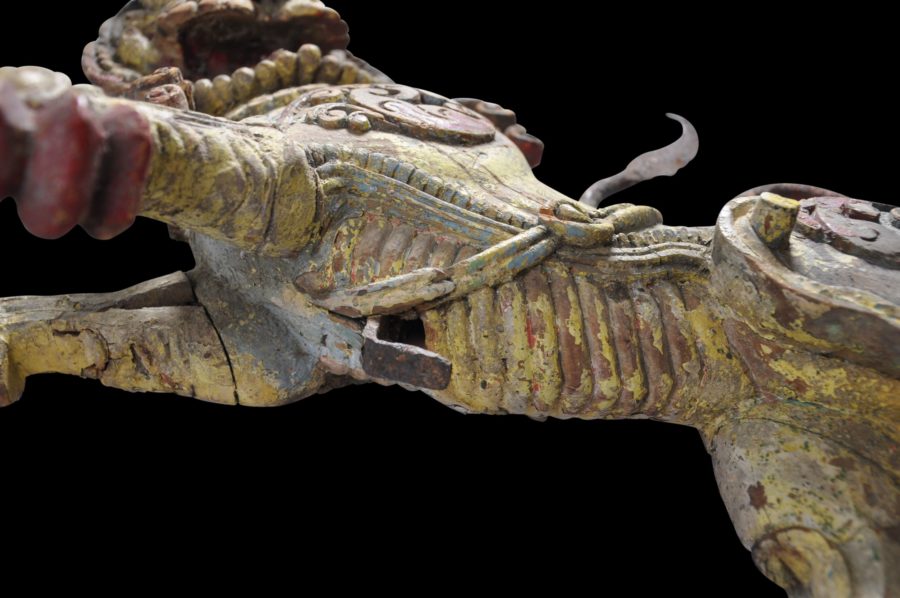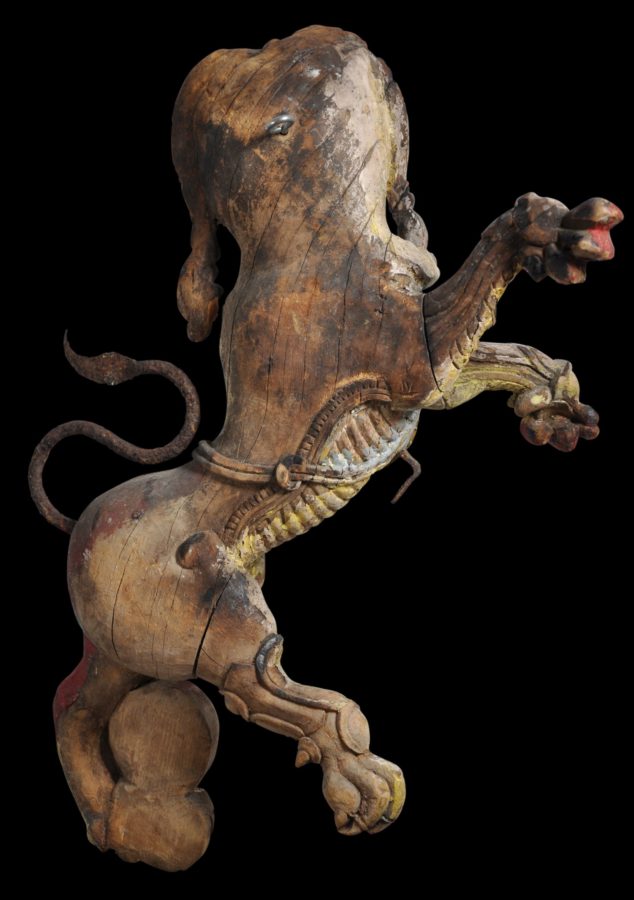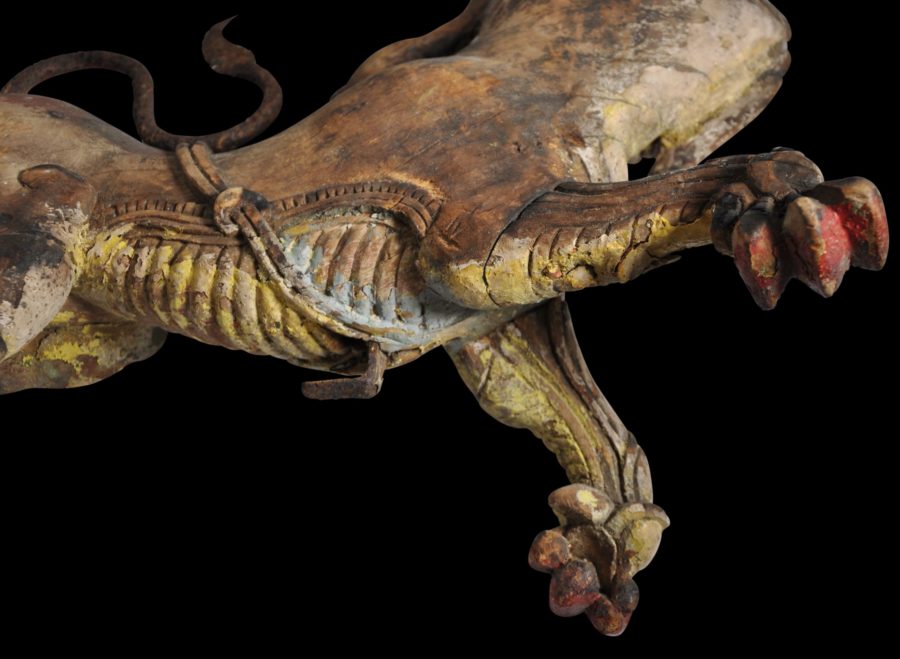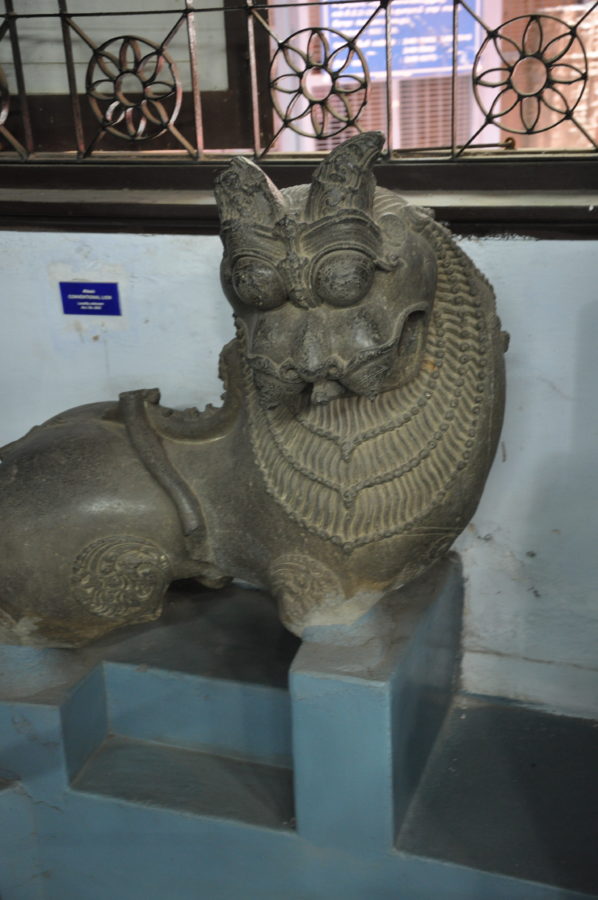This splendid pair of South Indian mythical lions or simmam most probably are from a temple or a temple chariot in southern India, probably Tanjore (Thanjavur) in Tamil Nadu, or Karnataka. They were found in the UK and almost certainly have been in the UK since colonial times.
The two are a pair in that they have been carved as the mirror image of one and other.
They have been carved from several pieces of wood and have red, yellow and white polychrome remnants. Each has been fitted with a curling metal tail.
Both have been carved with sinewy features, exposed rib cages and extravagant manes, teeth, and very bulging eyes. The front and rear shoulders have been carved with leafy flourishes.
The energised form of the simmam with its leafy flame-like decoration guards against demons and is closely related to the Shivaite kirtimukha mask which formed a similar function. The lion is also the vahana or mount of the goddess Durga.
Coomaraswamy (1908, 1956, p. 87) provides a line drawing of almost exactly this form, saying that it was taken from an old Tanjore Tamil craftsman’s note-book.
The form of this simmam has existed in South India since before the Chola period.
Also, the carving here has some resemblance to an image of Durga and a simmam figure illustrated in Bromberg (2013, p. 105) which is attributed to the 15th-18th centuries.
The pair here are dynamic and very sculptural. Each is in a stable condition. The surfaces of each show much age and patina. There are no obvious losses to the carving.
The final image below shows a stone version of such a lion, photographed in the Government Museum, Chennai.
References
Bromberg, A., et al., The Arts of India, Southeast Asia, and the Himalayas: At the Dallas Museum of Art, Yale University Press, 2013.
Bussabarger, R.F. & B. Dashew Robins, The Everyday Art of India, Dover, 1968.
Chakravarthy, P., Thanjavur: A Cultural History, Niyogi Books, 2010.
Coomaraswamy, A.K., Mediaeval Sinhalese Art, Pantheon Books, 1956 reprint of the 1908 edition.


